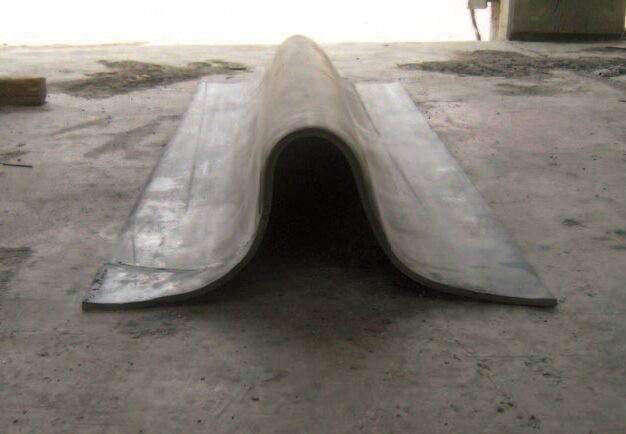Oil-resistant conveyor belts CONVEYING ADVICE
Conveyor belts that are transporting cargo that contains oil or resin such as grain, biomass, organic fertilizers and other forms of cargo containing wood derivatives need to be made of a rubber compound that is resistant to oil. Rubber belts that are not adequately resistant will provide a much shorter working life than they should. As the oil imperceptibly penetrates the rubber, the ability of the rubber to withstand abrasive wear will decrease quite dramatically. As the rubber continues to soften it also steadily loses its tensile strength while at the same time becoming much more prone to ripping and tearing. The next stage is when the rubber begins to swell and distort. This causes steering and handling problems along with a serious reduction in the elongation at break (the amount of stretch before the belt snaps).
There are two distinct sources of oils that damage rubber — vegetable/animal and mineral. Vegetable oil is the most predominant source of bulk cargo materials and is defined as all forms of oil (and resin) that are derived from flora and fauna. Mineral oil on the other hand is usually a liquid by-product of refining crude oil to make gasoline and other petroleum products. Mineral oil is composed mainly of alkanes and cycloalkanes, which are related to petroleum. It is important to bear in mind that there can be a marked difference in the swelling caused by different oils and resins on rubber compounds.
Despite the fact that each has its own particular effects, most conveyor belt manufacturers only offer one oil-resistant rubber cover quality compound. This is often referred to as ‘MOR’ (medium oil resistance). In my experience, providing the best possible protection against the differing effects of each category requires an oil-resistant rubber that is as specific as possible to the type of oil or resin rather than a single ‘one rubber compound suits all’ approach. A small number of manufacturers do have more than one type. Netherlands-based Dunlop Conveyor Belting is one such example with its ROM grade for vegetable-based oils and ROS grade for mineral-based oils and products with a particularly high concentration of vegetable oils or resins. It is important to be aware that some of the Oil seriously distorts the biggest manufacturers of flat rubber belts. belting in the world, primarily those in Asia but even some based in Europe, use the DIN reference number 22102 G when referring to oil-resistant belting. This can be very misleading because the fact is that there are no firm requirements, test methods or limits specific to oil-resistant belting associated with DIN 22102 G. The letter ‘G’ is simply used to denote oil- (or grease-) resistant belting and is NOT an indication of the actual resistance level. Oil-resistant conveyor belting can be quite a complex subject in its own right so if you have any doubts or questions then it is always best to seek expert advice.
 Read more about oil resistant cover grades
Read more about oil resistant cover grades
Bob Nelson
